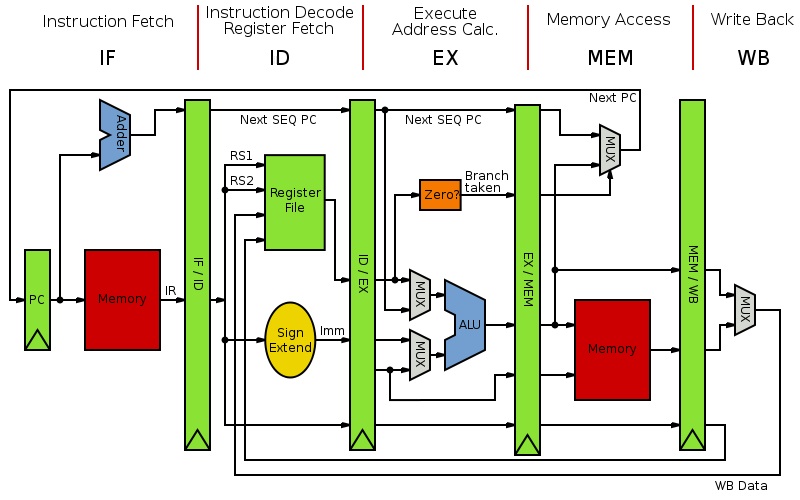
WEEK 10 LEARNING OBJECTIVES
Day 1
- Justify the statement "Pipelined processors that
execute instructions only in-order must stall on cache miss."
- Describe the process that the cache controller must
complete on instruction read miss.
- Describe the process that the cache controller must
complete on data read miss.
- Explain the statement "A cache is theoretically
a mirror image of parts of main memory."
- Define inconsistency in terms of cache blocks.
- Describe the write-through cache consistency
strategy.
- Describe the effect of write-through on the processor
CPI.
- Describe the use of a write-buffer to minimize
the write-through effect on process CPI.
- Describe the write-back cache coherency strategy.
- Describe how changing the width of the memory bus
increases the memory bandwidth and reduces replacement time.
- Describe how synchronous DRAM and DDRAM improve
the performance of the memory system.
Day 2
- Define fully-associative cache.
- State the advantages and disadvantages of
fully-associative cache.
- Define set-associative cache.
- State the advantages and disadvantages of
set-associative cache.
- State the mapping equation for an n-way
set-associative cache.
- Diagram an n-way set-associative cache
as read and write accesses occur.
Day 3
- Describe the least-recently used replacement
strategy for n-way set-associative cache.
- Describe the random replacement strategy for
n-way set-associative cache.
- Justify the statement "random replacement does
not consider temporal locality with the same importance as
least-recently used."
- Describe the use of cache levels to improve
memory performance.
- Justify the statement "multiple levels of cache
reduce the miss penalty at the processor."
- Draw the simple four-state cache controller finite
state diagram for a direct mapped cache with write-back cache strategy.